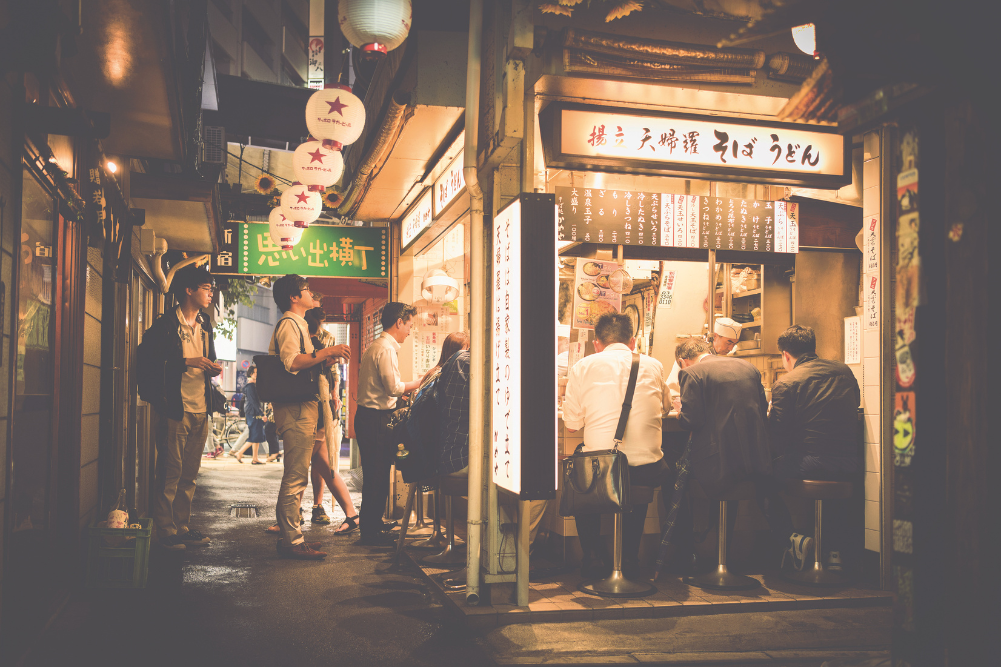Could you spend a year in the bush?
“Awaken your spirit to adventure;
hold nothing back, learn to find ease in risk.
Soon you will be home in a new rhythm,
for your soul senses the world that awaits you.”
~ John O’Donohue
I am crouched on the dirt under the rickety beams of a lean-to shelter as a storm front growls closer. My fingers reach to scratch the hundreds of reddening mosquito bites on my limbs that have joined up to look like some venereal disease, the legacy of a morning down in the swamp collecting paperbark for my roof. Roof. The word itself is comforting, with all its assumption of protection. I’ll know soon enough if it’s true, I think, peering out at the thickening clouds.
A spectacular clap of thunder releases fierce bundles of rain that splatter the bark above my head in thudding bursts. My stomach lurches. Please, please be dry, I mouth silently. I scan the ground for signs of drips, but the rain actually seems to be staying on the outside. Splat. Hang on, what was that? Splat. And that? Splat. Three drops collect near my feet. Stop, stop, stop, I whisper to them. I crane my neck to trace the source. The rootlets that were the bane of bark removal are now little water slides, giving the rain a free ride straight in. I sigh as the drops turn into a steady stream pooling around my ankles.
This is what you wanted, remember? I remind myself. No buffers, no bubble-wrapped life. Just the raw truth of rain trickling down my back, splinters in my hands, the scent of soot-soaked skin. Something, anything to jolt me out of my malaise. But a whole year … Can I really do it? The question hangs in the moist air.
Firm friends, you & I
I thought I knew the forest until we moved in together. And then, as is often the case with flatmates, I realised I barely knew it at all. It had been an easy assumption to make. I was a forest campaigner — I lived and breathed all things wild. I knew its names and numbers: hectares lost, saved and under contention; species extinct, threatened and rare. I knew its borders and boundaries from luridly coloured harvest plans, the inhabitants’ most private figures from computer logarithms. It was the kind of knowledge that led me to believe I knew it better than I did. But what I really knew was “The Forest”: revered, magnificent, faraway — a framed photo on the wall of my office, while a hot shower and cushy bed waited for me at the end of the day.
That was the problem, though: the Good Life back in the city had come to feel like a gilded cage. Once a passionate activist, I had become one of those pale-faced greenocrats, saying the right words but in hollow voices, cut off at the stump from the places that once inspired them. It wasn’t just the job — the whole web of partner, friends and community that I was woven into was stifling. It was just the busyness of it all. The relentless onwardsness of everything. There was a momentum behind my life that felt out of my control, me merely a passenger on it.
I sped up, thinking if I could just get to the end of the string then I could slow down, but there was never any end. I felt brittle, easily broken. One sudden movement and I would shatter. What really needed saving here? I began to wonder. Was I too busy “saving” something else to see what was dying within? Something just as wild, just as threatened, something only I could save? I daydreamed of kicking off my shoes, walking out the office door and not stopping until the city streets turned to leaf litter under my feet.
Then an email popped into my inbox: a year-long Independent Wilderness Studies Program on the north coast of NSW. My heart did a cartwheel. Imagine that! No emails, no buzzing phone, no 5am media releases. I stared at the forest screensaver, fantasising. What would life be like whittled down to the barest of essentials? If I was answerable only to earth, fire, water and air? If my responsibility to the forest was not as saviour or spokesperson, but merely to belong to it? One more creature resting under its broad wing? I longed to know.
To qualify, all I had to do was study the basics over two week-long courses and prove that my motivations weren’t madness or law evasion. At the end of the introductory course, I felt more alive than I could ever remember. I began dreaming of gypsy women beckoning me with long, bony fingers to follow them into the wilds. It was time for me to stop talking and start listening again to the forest. To immerse myself in its culture, its language, its law. The first of six to sign up, I hardly gave a backward glance as I quit my job, left my partner and life behind and entered into a 12-month apprenticeship with nature.
The wild outdoors
“Humpy” building was just the first challenge. The caveman curriculum also included matchless fire-making, hunting and trapping, tanning hides, bird language, awareness, bush food, basketry, animal tracking, rope and pottery making. The rules were few. It was essentially a Choose Your Own Adventure, with equal emphasis on experiencing the changing face of the bush and ourselves, over four full seasons. A cross between the reality TV show Survivor and the solo wilderness reverie that US poet and naturalist Henry David Thoreau elucidated in his book Walden. “Simplicity, simplicity, simplicity!” Thoreau had exclaimed in exaltation of his self-styled life as a forest hermit, words I had inscribed on the inside cover of my journal.
Simplicity, as I discovered, was deceptively hard, especially when attempting to marry “shelter” and “waterproof” together with paperbark and natural string. I developed a new theory: it was actually the need for corrugated iron that fuelled the industrial age. After my experiment with paperbark I decided to thatch with grass. Bundle by bundle, over many hours, days and weeks, I was reminded to slow down.
Fire provided another hard lesson. The first time I saw a woman pick up a stick and spin it onto wood to make fire using the same method that would have been used on this land for tens of thousands of years, it felt like I was witnessing a birth — it was that intimate, that profound. The sheer simplicity of this “hand-drill” technology blew me away. I wanted it, badly. “The greater the need the greater the result,” advised the instructor. With this in mind I made a firm commitment to only use primitive fire-making techniques for the entire year.
While I predicted my matchless rule might put a dampener on my tea addiction, what I didn’t foresee was the throbbingly painful blood blisters the size of 20-cent coins it would leave on both palms. Three months into the year and all I created was smoke. Luckily, I found my stride with another fire-by-friction method called bow-drill, although the significant grunt work still deterred me from frivolous hot beverages. But it was hand-drill I wanted and, the more I tried, the further from my grasp it seemed to be.
Still, I relished the repetition that creating house and home with earth skills necessitated: the “over and under” of basket weaving, the “paddle and pinch” of pottery. It was as if I had stepped into the “chop wood, carry water” koan, glimpsing the joy that follows when path and practice are synonymous; when life is meditation and meditation is life.
Feeling at home in the bush required more than sporting the latest in primitive IKEA home furnishings. Initially, the 100 acres of bush we lived on was to my eyes all prickle and scratch, a far cry from my ideal of old-growth forest gums, clear mountain streams and soft, grassy groves. Gradually, its Beauty was revealed to me through patient hours atop the rootball of a large fallen tree on the edge of a gully, just watching and listening.
Along with my knife, my binoculars became part of my new uniform as I discovered the world of birds. Tweets and chirrups that had been background music my whole life took on shape, colour and personality. It was as if I had been surrounded by exquisite original paintings all my life and was only just noticing them. I was captivated by the soap opera playing out in front of me: the constant feeding frenzies, territorial skirmishes, petty fights, games and courtships. The doors of the forest swung open, transporting me to a storybook land where giant owls kidnapped bandicoots, parrots and possums by moonlight; where wrens and warblers wove silken sacs of huntsman spider babies into their nests.
The wilds within
In the end, it was negotiating the wilds within that proved my biggest challenge. With the arrival of winter’s bitter winds, I rolled down the shutters of my thatched hut for hibernation. However, rather than slowing in synch with the season, I found myself as driven as ever, rushing from skill to skill and sneaking to-do lists in my journal. Solitude flushed out a harsh self-judge that stalked my every move with magnifying glass in hand; bringing every nuance of my being into accentuated focus, blowing up every internal freckle, every blemish. Daily it taunted me with the question: how do you want to spend your precious days, your precious life?
With painful clarity I saw how deeply I had bought into the culture of achievement and striving. I came to realise that the true purpose of my year was to break my addiction to doing and learn how to just be — to let go of control and find and follow the tracks of the Wild Woman within. Fire proved my greatest teacher. The night I donned a blindfold and spun the hand-drill fire-stalk without thought of progress or success, I was gifted with a glowing red ember.
Spring burst forth in shades of yellow and I emerged from my hibernation hungry as a hunter. The wall of green transformed into supermarket and pharmacy, as I uncovered more bush tucker and medicine at my doorstep. Still, I knew only taking life would sustain my own there in the long term. It took courage and the power of intention to finally snare my first successful hunt. Tanning the hide for clothes, I was starting to look and feel like a true cavewoman. Yet, despite supping on the wild heart of a wallaby, it wasn’t until I was on the cusp of a solo survival ordeal that I finally quit the trying and truly experienced the freedom of a wild heart within.
Just as the rain softens the seedpod, my year in the bush cracked open all my hard places. The years since then have been a process of learning how to live the lessons while back in the land of the busy; how to live in the material world and yet stay connected to the spirit that moves through all things, which permeates life in the forest so viscerally.
People ask me how I’m different. Friends tell me I’m softer, more present. Although I am less certain, groundless almost, since my year in the wilds, in a fundamental way I feel stronger. When life threatens to suck me into the whirlpool of endless “doings”, I feel myself grow thin and brittle. It takes conscious effort to turn and swim in the opposite direction.
I have discovered it doesn’t need weeks or days. A regular afternoon or even an hour in the bush is enough to pick up the conversation and plump up the feathers. More and more, though, I am realising that wildness is less of a place and more a state of being — a receptive flow, which the forest modelled so effortlessly and to which I continue to aspire.
Claire Dunn is the author of My Year Without Matches: Escaping the City in Search of the Wild, now in bookshops and online.







